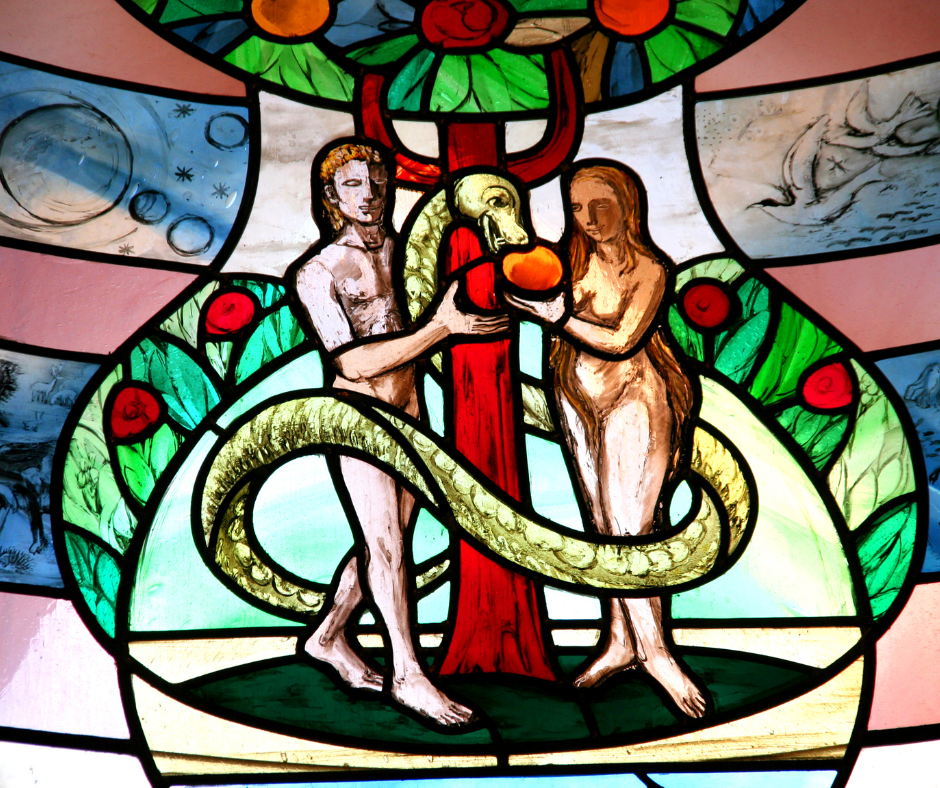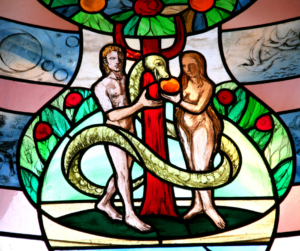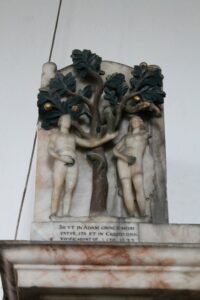On a young earth creationist website, www.creation.com, I stumbled across a paper criticizing The Archetypal view of Adam and Eve put forth in John Walton’s book The Lost World Of Adam and Eve: Genesis 2-3 and The Human Origins Debate. The paper is titled “John Walton Reimagines Adam and Eve” and is written by Keaton Halley. You can read “John Walton Reimagines Adam and Eve” by clicking here. In this blog post, I will be responding to Halley point by point. For the sake of my readers’ time, I’ve divided this blog post up into two instead of having one really long post. You can read PART 1 of my response by clicking here.
Walton’s Treatment of Genesis 3:20
In Genesis 3:20, Eve is called “the mother of all living”.Walton claims that this does not prove “all humans are genetically descended from Eve” (p. 187). He says such an expression is not indicative of biology since Jabal and Jubal were the fathers “of those who dwell in tents and have livestock” and “who play the lyre and the pipe” (Genesis 4:20–21). If being described as the fathers “of those who dwell in tents and have livestock” and “who play the lyre and the pipe” doesn’t imply that all tent dwellers and lyre players are biologically descended from Jabal and Jubal (and no one has ever made that claim), then why does the fact that Eve is described as “the mother of all living” imply that all living humans are biologically descended from Eve?
Keaton Halley criticized this argument saying “Walton has ignored the differences in context. Jabal and Jubal started disciplines which they passed on to others and in this way played a fatherly role to those who followed in their footsteps. But how is Eve’s motherly role anything like that? Eve did not invent the discipline of ‘living’ and pass that on to non-relatives. There is no reason to think that she would be a mother to all in any sense unless she and Adam were the biological progenitors of the entire human race.”
This seems like a really powerful counter, and I don’t know how to respond. However, this is not the only rebuttal Walton gave to the use of Genesis 3:20 as a prooftext for Adam and Eve being the progenitors of all humanity. Walton also said “…the reference to the ‘living’ in the explanation of her name is a word that can refer to all creatures, yet all animals are not biological descendants of Eve.”1
I should also point out that showing Adam and Eve aren’t the universal ancestors of all human beings isn’t the main thesis of Walton’s book. The thesis of Walton’s book is that Genesis 1-2 doesn’t say anything about the material manufacturing process of the cosmos or of human beings, so the creation account in Genesis is not incompatible with an evolutionary view of origins.
Granted, when it comes to the science of population genetics, we do run into a problem, but if you just stick to pure exegesis and ignore science, you can affirm The Cosmic Temple Inaguration/Functional-Creation view of Genesis 1 and the archetypal view of Adam and Eve, and agree that Adam and Eve were priests in the Garden of Eden and that the Garden of Eden was sacred space, but also hold that Adam and Eve were the sole progenitors of the human race.
One doesn’t even need to deny macro evolution to hold this view. Some have devised possible scenarios in which Adam and Eve and all animals have evolved, but although Adam and Eve had contemporaries, they were still the ancestors of all humanity.
In his blog post “Should Christians Oppose Evolution?” apologist and blogger Tim Stratton offers the following evolutionary creation model.
“1. God exists and possesses omniscient middle knowledge.
2. Big Bang (God chooses and actualizes this world and all that will happen in it)!
3. The universe unfolds…
4. Our solar system and earth come into existence.
5. Life evolves exactly the way God knew it would via his design in the finely-tuned initial conditions of the Big Bang.
6. Homo sapiens evolve as planned (not by accident).
7. God “breathes his image” (soul) into the Homo sapien making the first human in another act of special creation.
8. God does the same thing with a female Homo sapien and then “breathes his image” into her making the first female human.
9. God separates Adam and Eve from the other “soul-less” Homo sapiens (who are physically identical, but not spiritually), and places them in the Garden of Eden with the Tree of Life (as long as they eat of this tree they will never experience a physical death).
10- After the fall, Adam and Eve are expelled from the paradise of the Garden of Eden and the Tree of Life (now they will eventually die).
11. After Adam and Eve’s son, Cain, kills their other son, Abel, Cain is expelled from the world’s only “human tribe.” Cain is scared of other soul-less Homo sapiens who may kill him (Genesis 4:13-14).
12. Cain finds a physically identical but soul-less Homo sapien female as a wife (Genesis 4:17). The human soul is always passed on to offspring (avoids “bottle-necking” problems).
13. The human soul is a trait preferred via natural selection (as it allows for rationality).
14. Soon, all Homo sapiens have souls created in the “image of God.” Therefore, now all Homo sapiens are human (All humans are Homo sapiens, but not all Homo sapiens have been human).
15. This is exactly the way God planned and designed life to unfold. It all started with the Big Bang!”2
The most controversial and most important part of the model is 8-14. This is because it deals with the origin of humanity and the historicity of Adam and Eve. Stratton proposes that a few thousand homo sapiens evolved in the “March Of Progress” (step 6), and God elected to supernaturally intervene to endow one specific homo sapien with a spirit (i.e His image, entailing rationality, free will, and the knowledge of objective morality) (step 7). This homo sapien, He named Adam. God then did the same thing with a female Homosapien (step 8), whom Adam named Eve when he first met her. Step 9 of Stratton’s model posits that the other homo sapiens were not supernaturally endowed with His image, and therefore remained spiritless like all of the other animals in the world. If you’re having a hard time imagining this, think of the unintelligent, mute humans in the movie “The Planet Of The Apes” (the original one with Charlton Heston). While George Taylor was an intelligent, rational being endowed with free will and a knowledge of right and wrong, the other homo sapiens he encountered had devolved into unintelligent animals, and the apes in the movie (who had now gained intelligence and rationality) treated them as such.
Steps 10-12 of Stratton’s model posits that once exiled from the Garden of Eden because of their disobedience, Adam and Eve had other children, and once Cain fled the scene of the crime, the wife he found was one of these spiritless homo sapiens, whom he was able to reproduce with since they were physically identical. Over time, the divine image-bearing homo sapiens replaced the non-divine-image bearing once because natural selection preferred the former because greater intelligence provided for better survival.
Step 12 of Tim Stratton’s model is helpful since it posits that Adam’s offspring reproduced with spiritless homo sapiens. This would provide enough genetic diversity by the time of the Genesis flood (chapters 6-9) so that, although all people are inherited from Noah and his sons (who, in turn, were descended from Adam and Eve), we don’t run into the “But muh population genetics!” objection. All people are descended from two humans, Adam and Eve, despite evolution bringing about a large number of homo sapiens.
If you’re uncomfortable with the idea of “soulless” or non-spiritual homo sapiens, just chuck that aspect in the trash bin. The idea here is that if there were many humans in the beginning, through Adam’s children and grandchildren procreating with humans outside of the family, there could perhaps be a large enough amount of genetic diversity in Noah and his sons to account for the genetic diversity we see today. All humans are descended from Adam and Eve because those lineages were cut off when those humans drowned in the flood.
Tim Stratton, after presenting this model, went on to stress that he isn’t saying this model of creation is true. In fact, he wasn’t even arguing that evolution is true. Rather, he’s presenting this model as a possibility to show that macro evolution and Genesis 1-11 being historical accounts are not mutually exclusive affirmations. There is a logically possible way that both can be true. Therefore, if one is convinced of The Bible, one does not have to throw out evolution. If one is convinced of evolution, that is no cause to throw out The Bible. This model shows it’s logically possible for both Darwinian macro evolution to be true and for the historical accounts in Genesis to be true.
Evolution does nothing to undermine the inerrancy of The Bible and Christians have nothing to fear if they start thinking that Darwin’s theory has something to it.
In order to show evolution refutes Genesis (or vice versa), one would have to show that Tim Stratton’s model cannot even be possibly true.
Walton’s Treatment Of Acts 17:26
Halley wrote “Regarding Paul’s proclamation that God ‘made from one man every nation
of mankind’ (Acts 17:26), Walton says he is referring to Noah, not Adam, and has a geopolitical focus, not a biological focus.” — That is correct.
“However, the idea here is not that national entities were formed when existing people organized and established governments; it’s that all people groups trace their ancestry back to one person. As Walton admits, ‘The nations come into being through lines of descendants’ (p. 186), so this absolutely does concern biology! …. Noah did not give rise to the women on the Ark or the people living before the Flood—but Adam did.” — Even if Paul were saying that all of humankind is descended from Adam, I would simply apply Stratton’s model to avoid the population genetics issue. Again, the main thesis of Walton’s book is about whether The Bible makes any claims about material human origins that we as Bible-believing Christians must affirm. So, you can accept everything else Walton argued in the book (and I think you should) but disagree with him on this one point.
Responding To The “First In Line” Subheader
While I think Halley’s response to Walton’s take on Genesis 3:23 and Acts 17:26 are really powerful, this subheader was less than persuasive. To say that Adam being described in Luke’s genealogy as “The Son of God” means that Adam had no progenitors and that Adam was directly created by God is to beg the question in favor of de novo creation. The Bible certainly calls angels “sons of God” (Job 1:6; Job 2:1; Job 38:7; cf. Psalm 29:1; 89:6), but I see no reason to infer that the reason angels are called sons of God is that they “they had no forebears besides their Creator.” and even if that was the reason, there’s no warrant for saying that’s the same reason Adam is called The Son Of God unless you’re already presupposing that Adam was created De Novo. Perhaps Luke had a theological point to make. Given that scholarly consensus is that Paul’s letters were written before the gospels, Luke may have known how Paul contrasted Jesus and Adam (e.g Romans 5) and that Jesus is The Son of God. Perhaps this was a subtle point of affirming the sonship of Christ.
Sinful pre-Adamites
At this point in my Genesis series, some people may be thinking that I’m a Walton apologist. But I don’t agree with Walton at every point. In fact, in the subheader of Halley’s article titled “Sinful Pre-Adamites”, I am in 100% agreement with Keaton Halley. I thought Walton’s treatment on this issue strained credulity and took Romans 5:13 out of context. As Halley said in his response, Romans 5:13 is dealing with the Mosaic law and people not being judged by it until it was given at Mt. Sinai.
How God dealt with the humans the preceded Adam is a theological puzzle for us Evolutionary Creationists for sure, and I don’t think anyone really knows how to deal with it. Walton gave it his best shot, but I think he failed miserably.
Conclusion
I don’t think Keaton Halley succeeded in refuting The Lost World Of Adam and Eve. Only a few points were powerful rebuttals, but those weren’t against the primary thesis of the book.
——————————————————————————–
NOTES
1: Walton, John H.. The Lost World of Adam and Eve: Genesis 2-3 and the Human Origins Debate (p. 187). InterVarsity Press. Kindle Edition.
2: Tim Stratton, “Should Christians Oppose Evolution?”, Free Thinking Ministries, October 18th 2016, http://freethinkingministries.com/should-christians-oppose-evolution/






“This seems like a really powerful counter, and I don’t know how to respond.”
Being the mother of all living is simply assigning Eve a special place as a leading figure among all life, just as Jabal was a patriarchal figure for those that dwelt in tents. All life should look to Eve as a matriarchal figure.
That’s possible I suppose.